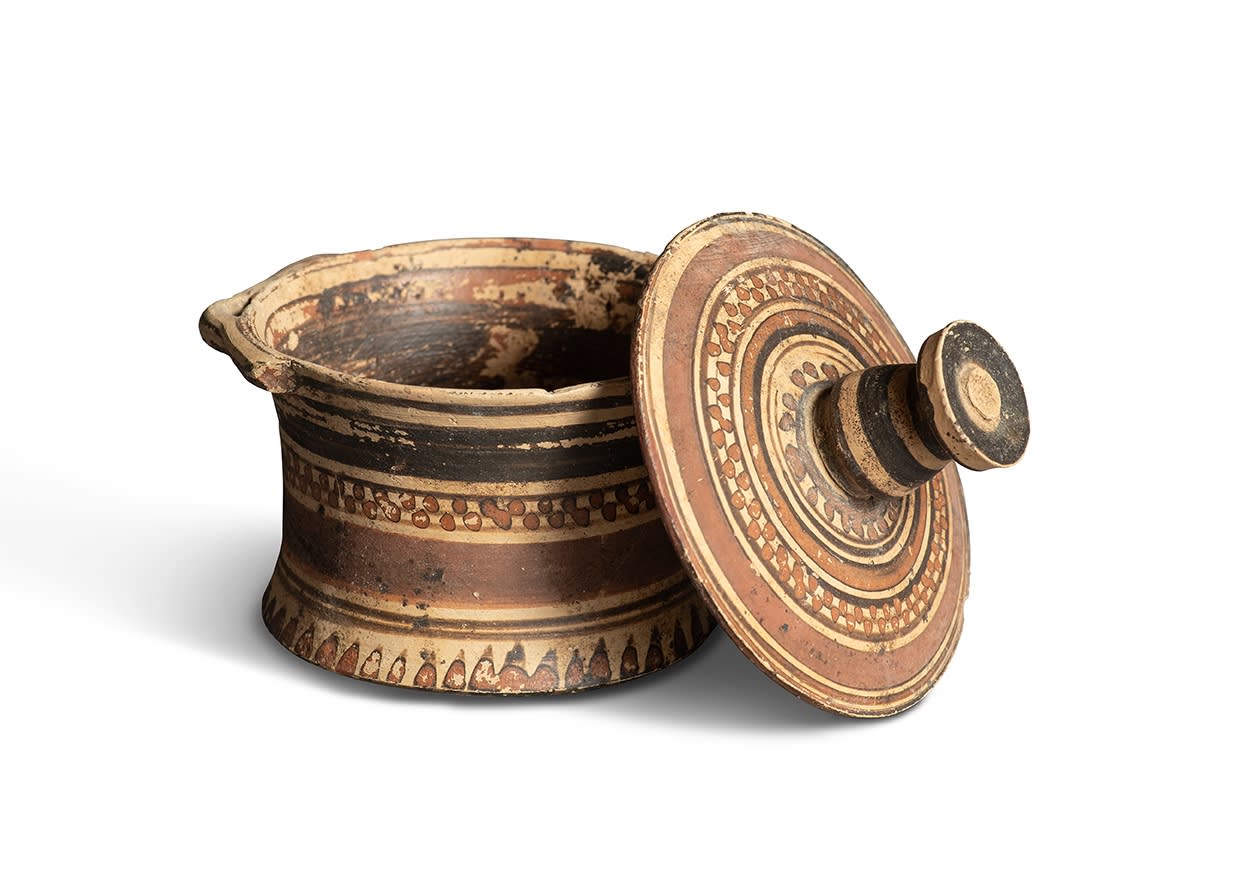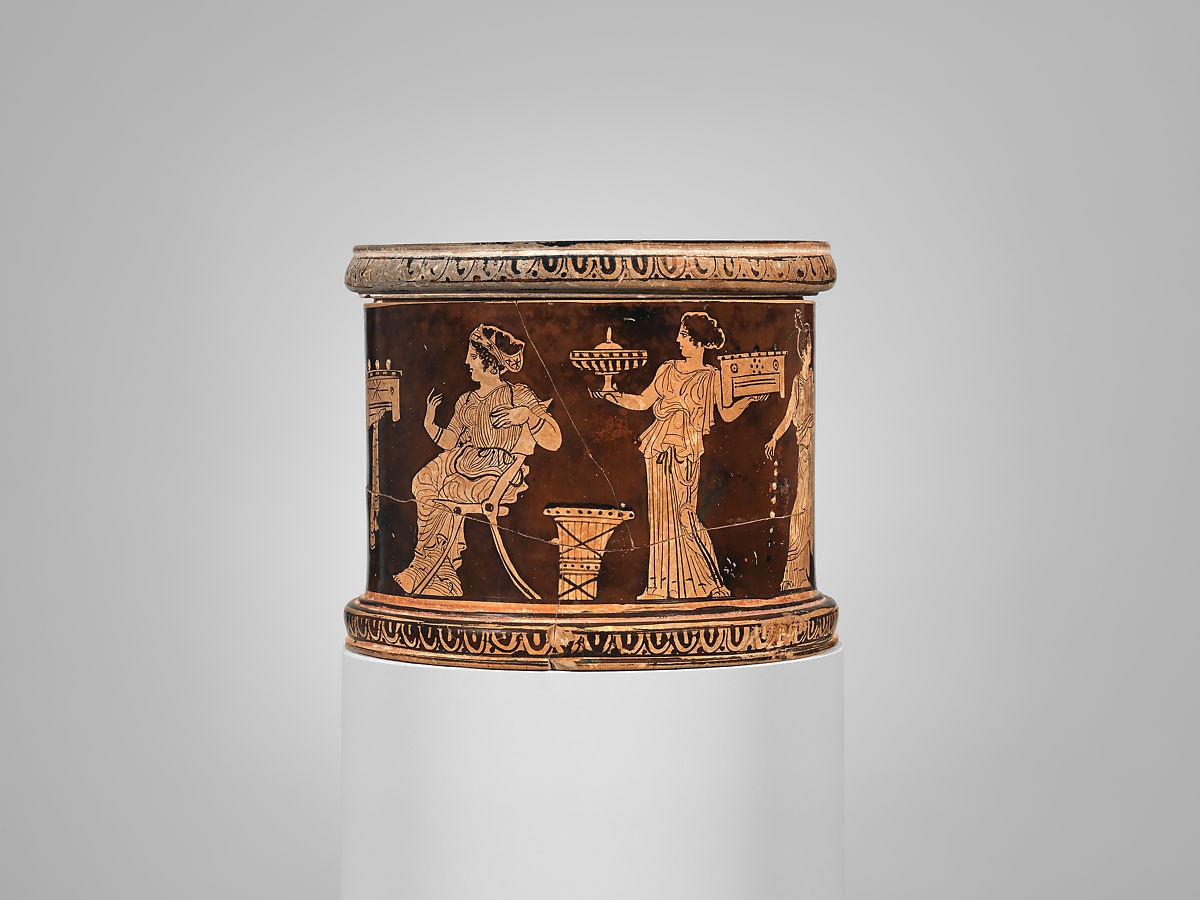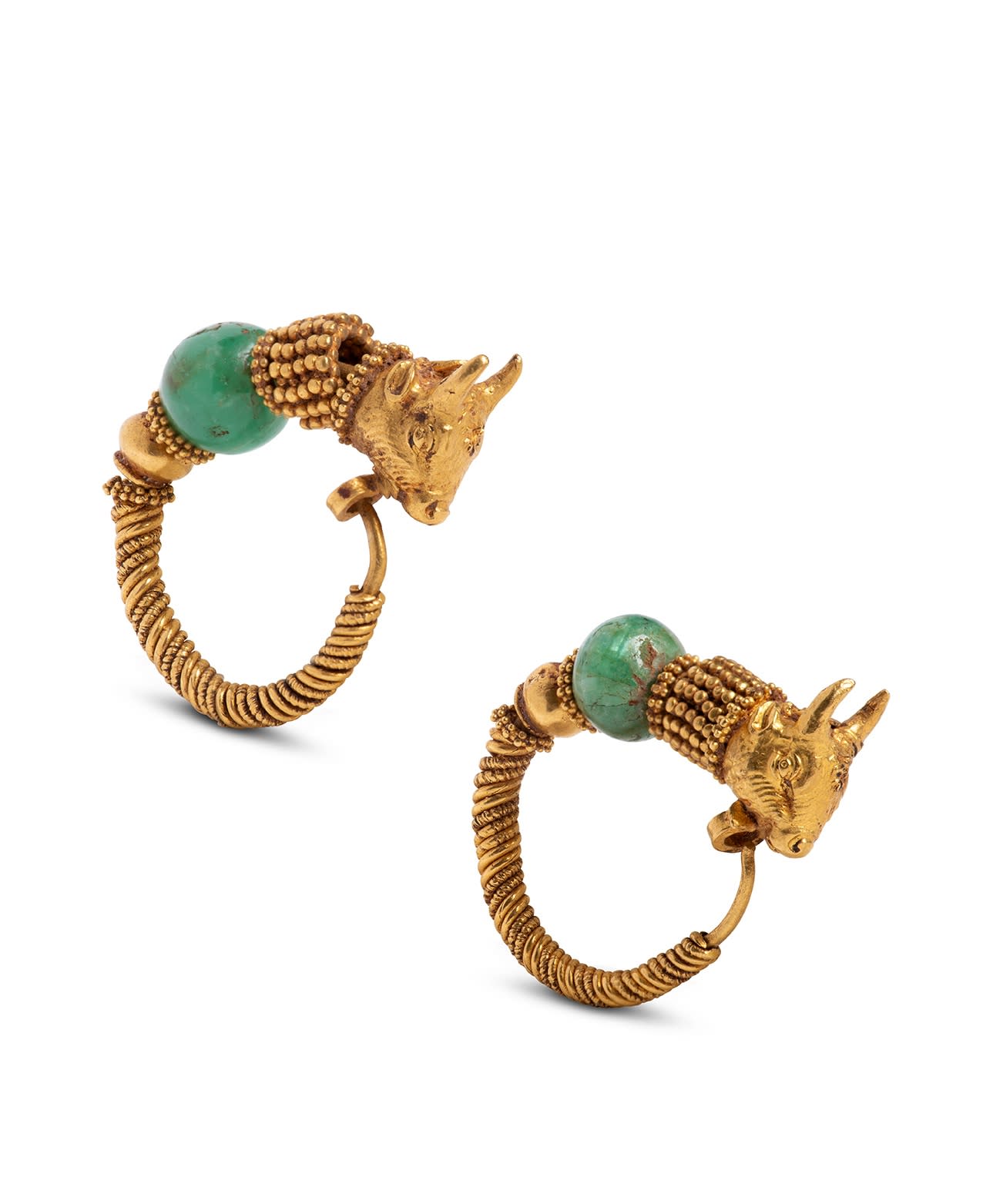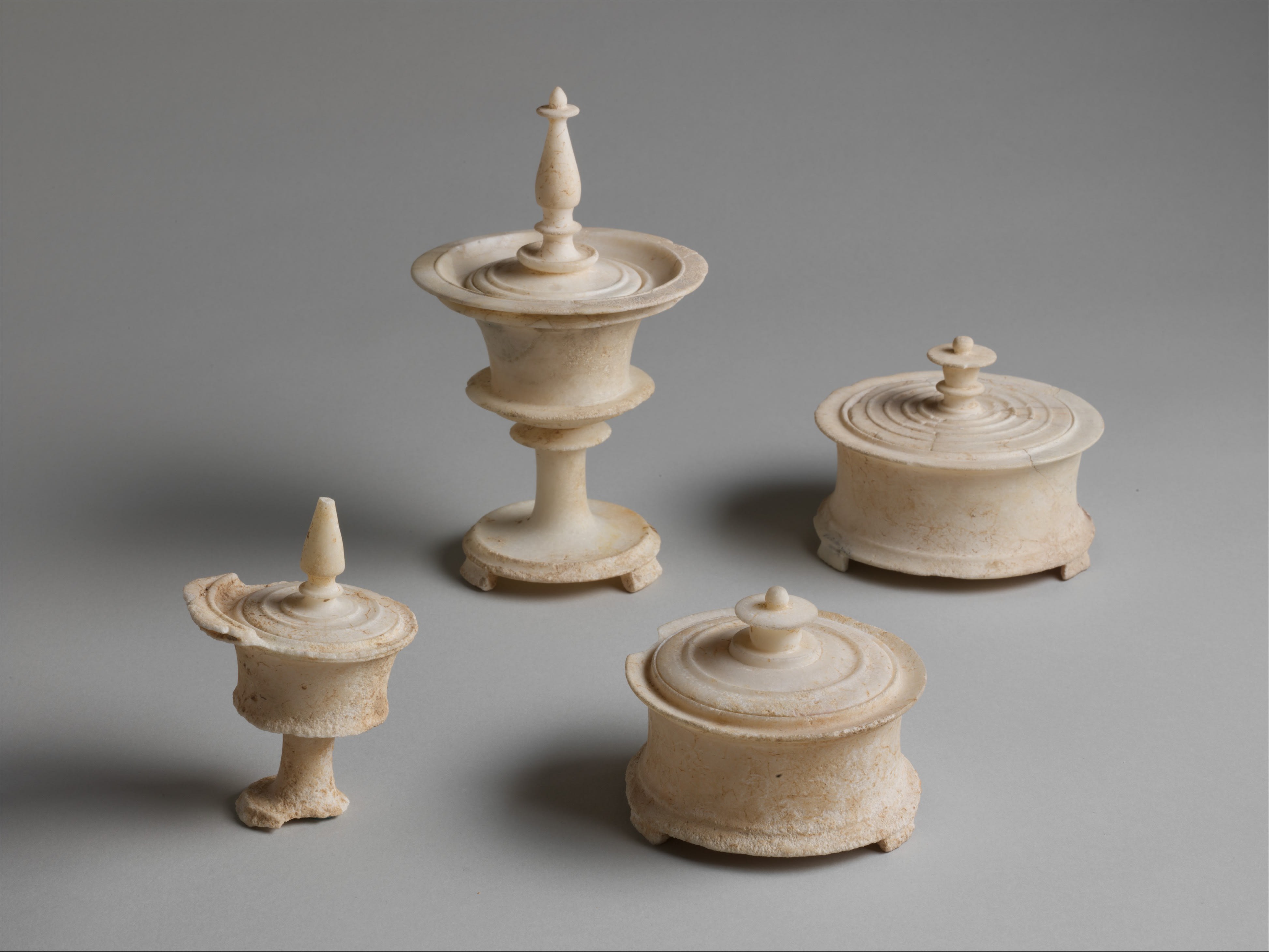She had twisted brooches, and shiny earrings in the shape of flowers. Around her tender throat were the most beautiful necklaces. Homeric hymn 5 to Aphrodite, lines 87-88

A pyxis (pl. pyxides) is a small round box that could be made of wood, ceramic, or marble. Examples in ceramic appear first in the Geometric period and continue thereafter. The pyxis belonged predominantly to the world of women, domestic and religious. They were painted tip to toe in extravagant colour and elaborate pictures or designs. In the home, such diminutive lidded cylindrical containers held trinkets, jewellery, and cosmetic creams, serving essential roles in the process of kosmesis (‘adornment’).
The Kallos Proto-Corinthian pyxis shows the development of Corinthian pottery from the Geometric towards orientalising. For much of the 7th and 6th centuries Corinth led the Greek world in producing and exporting pottery and Corinthian potters invented the black-figure technique of vase-painting. However, not all of their pottery was decorated with figural scenes and this pyxis shows how the traditionally angular geometric patterns began to be replaced with more curvaceous and less rigid ornamentation.

A PROTO-CORINTHIAN POTTERY LIDDED PYXIS
Circa 650 - 625 BC
When Athenian wares superseded Corinthian in the mid-6th century, the pyxis was decorated first in black-figure, and then in red-figure pottery. In red-figure vases, pyxides feature primarily in wedding scenes and red-figure pyxides themselves often show wedding imagery. It seems likely that pyxides were often commissioned as part of the bridal dowry and can be seen to a certain extent as a symbol of the female ideal: beauty, marriageability and fertility.

An Attic red-figure pyxis, attributed to the manner
of the Meidias Painter
The Metropolitan Museum of Art, New York, acc. no. 09.221.40a, b
Marble pyxides are a highly luxurious version of the pottery examples and the Schuster pyxis with its pedestalled foot and moulded stem resembles a very finely crafted chalice. Such pyxides were also presented as grave offerings, and as temple dedications to goddesses. Where recorded in sanctuary inventories, we find that these dedications, costly offerings in themselves, often held precious items such as gold rings, earrings, and exotic gems, and were very possibly wedding gifts.

A GREEK GOLD RING
Circa 450-400 century BC

A PAIR OF GREEK GOLD AND EMERALD EARRINGS
IN THE FORM OF BULL'S HEADS
Hellenistic, circa 4th - 2nd century BC
For example, a woman named Dexilla dedicated a gold ring in a pyxis in the Opisthodomos of the Parthenon in Athens and another pyxis was dedicated with a flute in the Asklepieion at Athens, and has been identified as a professional dancer dedicating the tools of her trade. Marble pyxides were also found at the sanctuary of Artemis at Brauron where women, those who died in childbirth and those about to be married, are recorded.
Thus it seems likely that their use as votives in temple dedications to such goddesses as Aphrodite, Demeter, Athena, and Artemis are largely connected to the traditions and function of women in Classical Greece: to celebrate their weddings, ensure a fruitful marriage, safe childbirth and healthy children. The pyxis, whilst not exclusively dedicated by women, primarily depicts and is associated with their traditional sphere, and as such provides a glimpse into the preoccupations and societal demands of women in classical Greece.

A group of marble pyxides
Late 5th to early 4th century BC
The Metropolitan Museum of Art, New York, acc. no. 1978.11.17a, b
The tall chalice-like form of pyxis with the moulded stem disappears in Greek vase-painting and ceramics after the 5th century. This decline may be related to contemporary laws limiting or prohibiting luxury. However pyxides continued to be made throughout antiquity, and also appear in the Greek colonies of South Italy such as Apulia. Gnathian ware pottery (named after the ancient city of Gnathia (now Egnazia) in Eastern Apulia) developed alongside the local examples of red-figure pottery. Gnathian vases are characterised by the application of different polychrome directly onto the black glazed body. Eros, as in the Kallos example, was a popular subject in Gnathian art and the god of love, holding a mirror in this depiction, fits in well with the kosmesis and wedding function of pyxides.

A GNATHIAN LIDDED PYXIS, ATTRIBUTED TO THE
PAINTER OF LECCE 1075
Greek, South Italy, circa 330 BC
For further reading see J. Gaunt, ‘The classical marble Pyxis and Dexilla’s dedication’, in R. Koehl (ed.) Amilla, The Quest for Excellence: Studies Presented to Guenter Kopcke in Celebration of His 75th Birthday, Philadelphia, 1994.